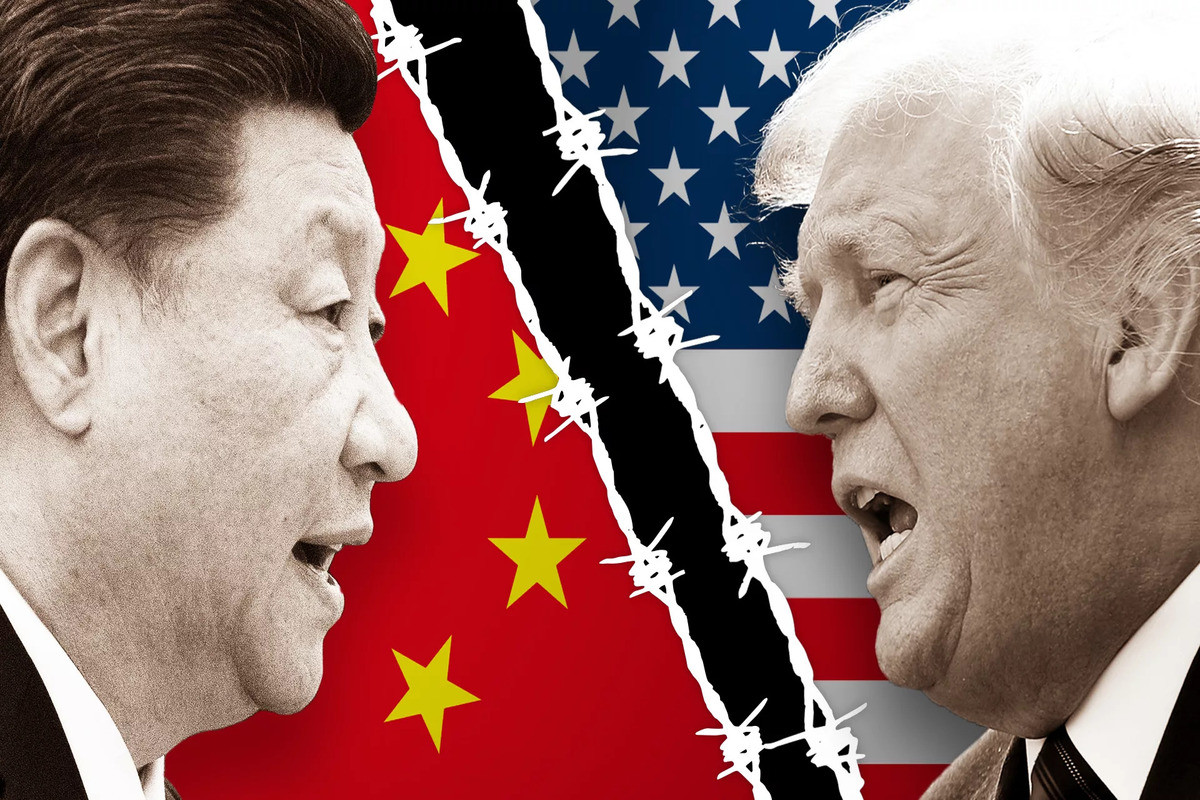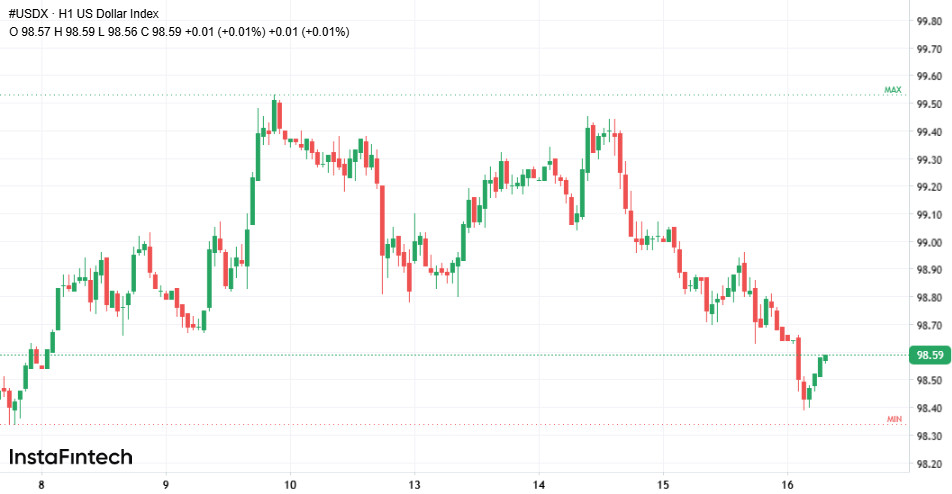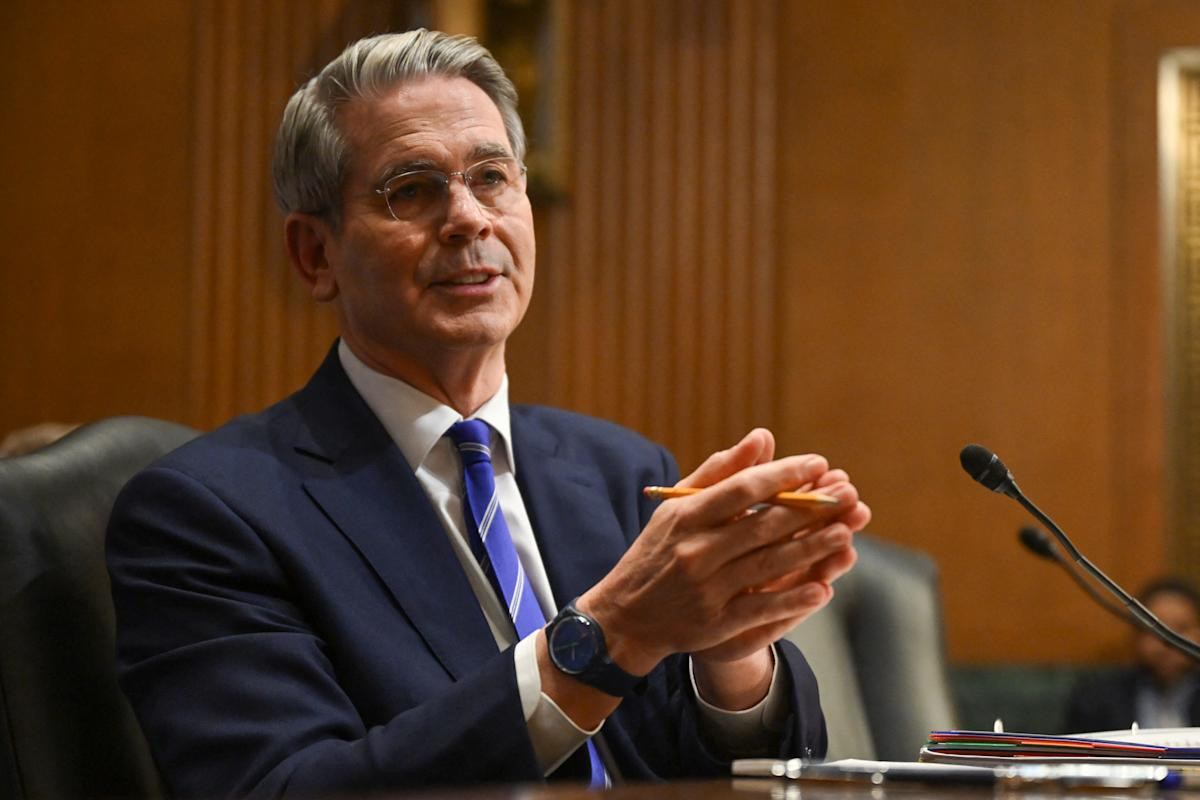
The trade war, which flared up again last week following Donald Trump's announcement of 100% tariffs on Chinese goods, continues to put pressure on the US dollar. On Thursday morning, the greenback slipped to a low of 98.38, and this may not be the bottom if the uncertainty in US-China relations persists. Here's what we know so far about the conflict — and what markets should expect next.
Dollar under pressure: latest currency market trends
On Thursday morning, the US dollar index dropped to 98.38 against a basket of major world currencies — a level not seen since spring. The dollar index, which measures the strength of the greenback against six key currencies, fell 0.16% over the past 24 hours and 0.33% over the past week.
The euro, in turn, climbed to a one-week high, reaching $1.1664. The Japanese yen showed the most notable strength, rising to 150.52 per dollar — its highest level in seven days.

The visible flight from the dollar is driven not only by growing expectations of a Federal Reserve rate cut, but also by geopolitical tensions. Mounting concerns over a potential escalation in the US-China conflict, which reignited last week, are weighing heavily on the greenback.
How the new round of the trade war started
To recap: the conflict between the US and China began earlier this year, when both sides imposed initial packages of import tariffs and retaliatory restrictions.
After several rounds of negotiations and mutual concessions throughout the spring, the two countries agreed on a 90-day trade truce, which was extended multiple times.
However, Washington's recent move to impose technical sanctions and new port fees on Chinese vessels triggered a renewed wave of confrontation.
Beijing responded in kind, announcing tighter export controls on rare earth minerals and other strategic materials. Additionally, there's growing talk in China about new barriers for Western companies operating in the country.
In response, Donald Trump warned that if China doesn't make concessions, additional 100% tariffs could take effect as early as November 1. The White House later softened its tone slightly, with officials saying the U.S. remains open to dialogue and is willing to discuss ways to resolve the dispute.
Trump–Xi meeting: hopes and fears
Markets and businesses are now pinning their hopes on the upcoming meeting between U.S. President Donald Trump and Chinese President Xi Jinping, which, according to US officials, could take place later this month on the sidelines of the APEC summit in South Korea.
This meeting is expected to be a pivotal moment: it could either halt the escalation or cement the divide between the world's two largest economies.
US Treasury Secretary Scott Bessent emphasized that Washington is committed to serious diplomatic engagement. Bessent is set to travel to Asia ahead of the summit to meet with Chinese Vice Premier He Lifeng and lay the groundwork for the leaders' face-to-face discussion. This level of preparation underscores the White House's emphasis on negotiations as a tool to stabilize the situation.
Still, markets remain cautious: on the one hand, the meeting offers a real chance to extend the current truce and potentially roll back some restrictions. On the other hand, the increasingly harsh rhetoric from both sides leaves little room to expect any major breakthrough without significant trade-offs.
New threats and diplomatic strains
Despite hopes for the upcoming talks, the trade conflict continues to intensify with new threats. This week, markets reacted strongly to Donald Trump's remarks about possibly restricting imports of Chinese vegetable oil used in biofuel production.
Trump said such measures are being considered in retaliation for Beijing's refusal to purchase American soybeans, and that the administration is prepared to act decisively to protect US farmers.
Meanwhile, Treasury Secretary Bessent noted that if China continues to tighten export controls on strategic materials, the US is prepared to coordinate countermeasures with its allies, including Europe, Canada, Australia, India, and other Asian nations.

He stressed that bureaucratic missteps in China should not dictate the terms of global supply chains, and that any reckless move from Beijing will be met with a collective and firm response.
Bessent also singled out the behavior of certain Chinese officials, sharply criticizing Deputy Commerce Minister Li Chengang for what he described as "disrespectful" and "unhinged" behavior during an August visit to Washington. According to Bessent, such actions raise tensions and signal a potential rupture in relations — something the world clearly wants to avoid.
Expert views and de-escalation scenarios
Most economists agree that the coming weeks will be crucial for the fate of global trade and currency markets.
Experts from the Commonwealth Bank of Australia and OCBC believe the most likely scenario is not a sweeping trade deal, but rather another extension of the current truce — even if time-limited. Joseph Capurso, for example, sees a strong possibility that the US and China will prolong mutual concessions for another 90 or even 180 days to avoid further escalation.
At the same time, some analysts point out that market jitters stem primarily from structural uncertainty and unpredictable behavior on both sides. The latest tariff and export control threats may simply be posturing — a way to build diplomatic leverage ahead of the summit.
Traders report increased volatility in recent days, along with growing demand for safe-haven assets like gold, the yen, and the Swiss franc — reflecting a decline in confidence in the dollar as the world's reserve currency.
Some experts go further: a prolonged trade war could reshape global supply chains, and the dollar's current weakness may be just the "first warning shot" before a deeper correction.
Markets are particularly uneasy about China's export control mechanisms. Some strategists warn that full implementation of the new rules could lead to a shortage of high-tech components and trigger inflationary pressures in the U.S. and Europe.
What's next: key risks and market outlook
In the short term, markets will remain extremely sensitive to any statements or leaks related to US-China negotiations.
The key date is November 10, when the current phase of the truce is set to expire. If the leaders can at least temporarily "freeze" the conflict, the dollar's decline may slow, and global indices could begin to recover.
However, analysts caution that even in the event of de-escalation, the strategic rivalry between the two economic superpowers will not disappear.
Investors are already seeking alternatives to the dollar. Capital is flowing into European and Asian markets, as well as into gold. Safe havens — like the franc, yen, and certain commodities — remain in focus. If talks collapse and the proposed tariffs are enacted, the risk of currency turbulence and structural shifts in global trade will only intensify.
Ultimately, the dollar's fate in the coming weeks will depend less on macroeconomic indicators or Fed rate decisions, and more on political dialogue between world leaders.
A weaker dollar could become the new market norm if the diplomatic impasse continues. But a sharp pivot toward even a temporary compromise could restore trust in the greenback and help stabilize global markets.





















